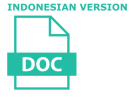Cross-Cultural Pragmatics Analysis in the Speech of European and Indonesian Football Match Commentators
Arif Fadillah(1*)
(1) Universitas Gadjah Mada
(*) Corresponding Author
Abstract
This study aims to describe the form of pragmatic speech acts and the form of comparison in football match commentators in Europe and Indonesia. This research will focus on contrasting the speech forms of football match commentators in Europe and commentators in Indonesia. The data in this study are in the form of speech of football match commentators in Europe and in Indonesia. The data were obtained from YouTube accounts of football matches. After the data is found and recorded, the researcher conducts data reduction. After the data is reduced, the researcher analyzes the data. This research uses speech act theory to describe each comment. After the types of speech acts in the two languages are described, the researcher then constructs each form of comment in both languages. This study found that illocutionary speech acts are found in football commentators in Europe and Indonesia. However, the illocutionary speech act of expression of gratitude is only found in Indonesian football commentators. In addition, the forms of utterances in football commentary are influenced by social factors such as religion and history. This research will contribute to seeing the distinctive forms of speech of football commentators in Europe and Indonesia.
Keywords
Full Text:
PDFReferences
Abdalhadi, H., Al-Khawaldeh, N., Al Huneety, A., & Mashaqba, B. (2023). A corpus-based pragmatic analysis of Jordanians Facebook status updates during COVID-19. Ampersand, 10(October 2022), 100099. https://doi.org/10.1016/j.amper.2022.100099
Bell, R., & Riol, C. F. (2017). The impact of cross-cultural communication on collective efficacy in NCAA basketball teams. International Journal of Cross Cultural Management, 17(2), 175–195. https://doi.org/10.1177/1470595817702678
Kadarisman, A. E. (2008). Hipotesis Sapir Whorf Dan Ungkap Verbal keagamaan. Linguistik Indonesia, 26(1), 1–21.
Ochieng, E. G., & Price, A. D. F. (2010). Managing cross-cultural communication in multicultural construction project teams: The case of Kenya and UK. International Journal of Project Management, 28(5), 449–460. https://doi.org/10.1016/j.ijproman.2009.08.001
Pookpanich, P., & Siriborvornratanakul, T. (2024). Offensive language and hate speech detection using deep learning in football news live streaming chat on YouTube in Thailand. Social Network Analysis and Mining, 14(1). https://doi.org/10.1007/s13278-023-01183-9
Sanubarianto, S. T., & Alisia, E. (2022). Tindak Ilokusi dalam Komentar Juri American Idol dan Indonesian Idol: Kajian Pragmatik Lintas Budaya. UNDAS: Jurnal Hasil Penelitian Bahasa Dan Sastra, 18(2), 189. https://doi.org/10.26499/und.v18i2.5170
Schueler, D., & Marx, M. (2023). Speech acts in the Dutch COVID-19 Press Conferences. Language Resources and Evaluation, 57(2), 869–892. https://doi.org/10.1007/s10579-022-09602-7
Searle, J. R. (1976). A classification of illocutionary acts. In: Language in society 5. Language in Society, 5(1), 1–24.
Searle, J. R. (1979). Studies in the theory of speech acts Expression and Meaning. In Cambridge University Press.
van Campenhout, G., van Lienden, A., & van Sterkenburg, J. (2022). Meanings given to (super-)diversity in the Dutch national team by Dutch football commentators: A historical approach. International Review for the Sociology of Sport. https://doi.org/10.1177/10126902221146032
Vincent, J., Kian, E. M., Pedersen, P. M., Kuntz, A., & Hill, J. S. (2010). England expects: English newspapers’ narratives about the English football team in the 2006 World Cup. International Review for the Sociology of Sport, 45(2), 199–223. https://doi.org/10.1177/1012690209360084
Wahab, A. (1991). Isu linguistik : Pengajaran Bahasa dan Sastra. Airlangga University Press.
Zakharova, O. (2023). Art as a Communicative Factor of International Sports Ceremonies. Herança, 7(1), 58–66. https://doi.org/10.52152/heranca.v7i1.806
Article Metrics
Refbacks
- There are currently no refbacks.
Copyright (c) 2023 The Author(s)

This work is licensed under a Creative Commons Attribution-ShareAlike 4.0 International License.







